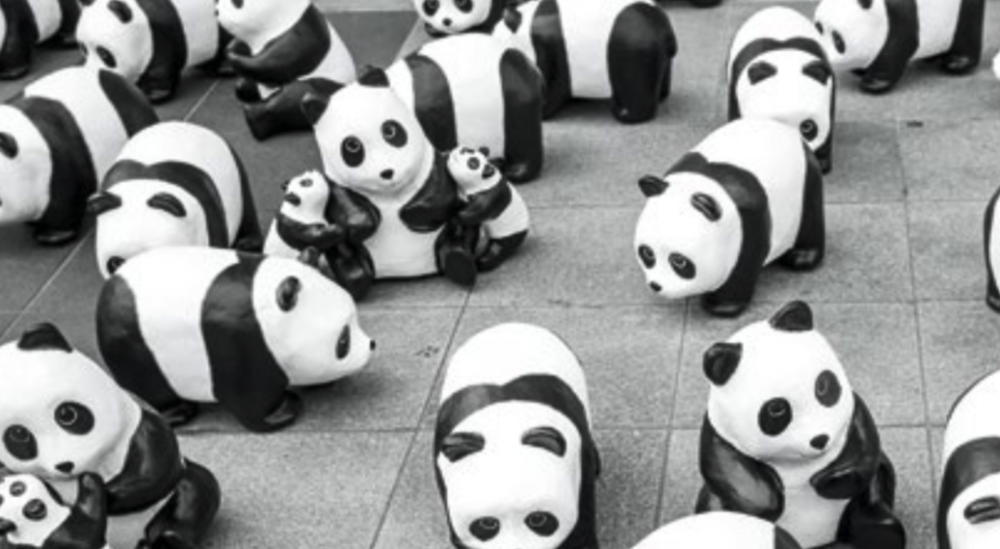Javary was at the Confucius Institute in Geneva in February for a conference which was aimed to allow us to enter into the world of “I Ching”, the great book of Yin and Yang, which “plays a role in Chinese civilisation that is comparable to that of Descartes’s “Discourse of the Method” in Western thinking. It was used as the conceptual and benchmark basis and framework for the language of nearly everything that was thought along the banks of the Yellow River. Although it was seen for a long time as a divination piece of work, it has now found the place it occupied in Classical China, that of a “map of the world”, in an abstract and dynamic form which is accompanied by a practical decision-making manual which any candidate for a mandarin position had to be fully acquainted with.
To allow us to enter this book, Javary chose to take us to the Great Wall of China, the “greatest example of Yin-Yang in the world”. The Great Wall, he reminded usat the beginning, was built to prevent the nomadic populations of Central Asia from disturbing the Chinese sedentary farmers. But a wall without a door is like a prison. We can moreover consider that a door makes a wall useless. The Great Wall is full of doors so how do we explain this contradiction ? By multiplying the walls at the places where there are no walls, in other words in the places where there are doors. Was the Great Wall impassable at the time it was built and until 1937 when the Japanese invaded China ? No. This Wall is a small wall that never exceeds five to seven meters in height along all its length which covers between 5,000 and 8,000 km in a web pattern. In addition, the Chinese are not fools and do not call the Great Wall but “the long ramparts”. It is more like a mountain motorway with dual functions. First of all prevent perpendicular communication, either climbing or attacks but at the same time encourage linear communication, by allowing troops to advance rapidly along a mountain area which was difficult to reach. The Great Wall is thus an illustration of the Chinese ability to design two things at the same time, according to Yin-Yang thinking. A motorway with regular towers known as lookout towers. Lookout ? Not only. As they are both too big to be mere lookout towers – they would only need to have built lifeguard posts to watch the beaches for example – and too small to act as garrison barracks. These towers acted as the relay antennas of our current mobile phones. They used to light fires and the flames at night and the smoke during the day informed the capital of possible intruders in the wall in less than half a day. The fires were lit with wolf droppings which produced very thick smoke. This is why when you read in a classical Chinese text, “Wolf droppings from all directions”, you have to interpret this as meaning “run for your lives”. The ancient Chinese thus wore themselves out building their wall and its towers in the most difficult places along the ridges for both these functions. If they had built it in the valleys, it would not have acted as an optical communication relay. It is thus a medium for disseminating information and a motorway to transport troops. As far as Javary is concerned, the Great Wall is a kind of treble clef that allows us to enter into the heart of the Yin-Yang way of thinking. Let’s now leave the wall to turn the pages of a very old book, the “I Ching”, the Chinese “Book of Changes”. What is Ching ? In this ideogram there is everything that relates to cloth weaving but also to networks. There is also the representation of an underground flow. As well as a damage tool which is used to build the clay foundations of all constructions, including those of the Forbidden City and the Great Wall. Preceding the Ching, “I” represents change. It is formed at its summit by the sign of the sun and at the bottom by the sign of the moon. The first meaning of I relates to the changes of time, the continuous passage from the sun to the rain and from the rain to the sun. Its second meaning is simple : to pass from the sun to the rain and from the rain to the sun, we must not rush time. Finally, the third meaning may seem somewhat strange : “fixed law”. As far as Javary is concerned, we enter into a way of thinking that is quite different to ours as we would never have given the same word the meaning of change and fixed law. In other words, change is the only stable base on which to build an effective strategy.
It is in the official commentaries of the “I Ching” that the philosophical meaning of the words Yin and Yang appeared for the first time. In a sentence that opens and summarises all Chinese thinking, a Yin, a Yang is the Tao. The great Swiss sinologist, Jean-François Billeter, taught us that the Tao represents the functioning of things. Javary summarised it as follows, the Tao explains why things happen and how they work. What works ? The seasons. Because spring follows winter etc. Tao is the name the Chinese give to this engine which makes the seasons follow one another throughout a year. A bit of Yin and a bit of Yang, that is how everything works. So if everything changes all the time, this means that the Chinese have invented a permanent mess, asks Javary. No, not quite. Because they had a stroke of genius when they invented the signal posts to help us find our way through the changes. It is precisely the Yang and the Yin. This common part gives the literal meaning of Yin and Yang which we can only translate into French into two old words : the sunny side and the northern side of a valley, where the clouds gather and make the sky dark. There cannot be a sunny side without a northern side as there cannot be Yin without Yang. This fundamental of Chinese thinking was expressed by Mao as follows : “one is divided into two”. Every situation thus has a Yin and a Yang aspect. Yin and Ying are not states, qualities or substances but media, movements, dynamics and indications of fluctuations in a constantly changing world.





